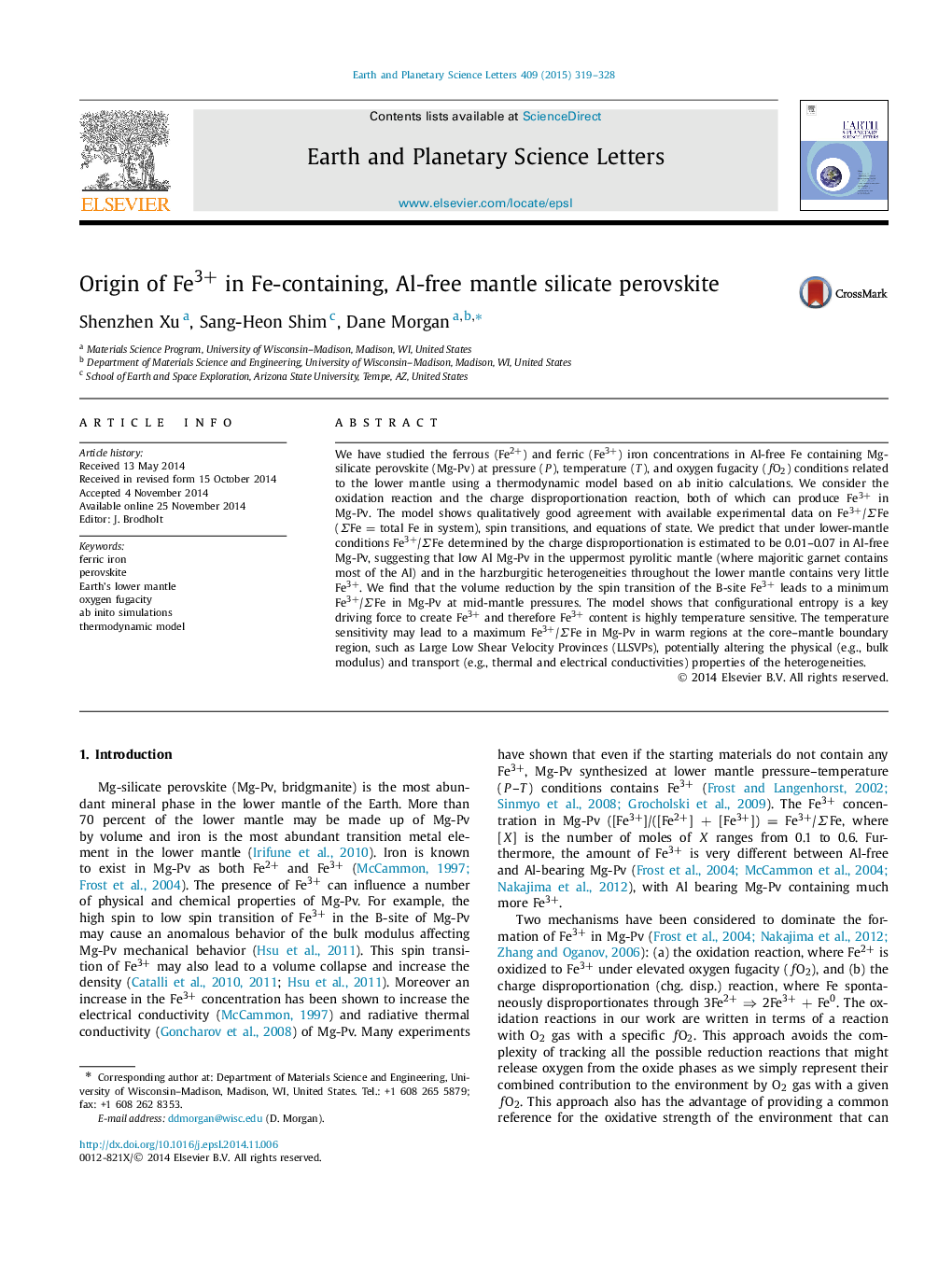| کد مقاله | کد نشریه | سال انتشار | مقاله انگلیسی | نسخه تمام متن |
|---|---|---|---|---|
| 6428868 | 1634747 | 2015 | 10 صفحه PDF | دانلود رایگان |

- Oxidation is the dominant reaction producing Fe3+ under experimentally relevant fO2.
- Charge disproportionation produces Fe3+ under the lower mantle relevant conditions.
- Configurational entropy is the driving force to form Fe3+.
- Fe3+/ΣFe is estimated to be 0.01-0.07 in Al-free Mg-Pv in the lower mantle.
- The B-site Fe3+ spin transition leads to the minimum Fe3+/ΣFe in Mg-Pv at 40 GPa.
We have studied the ferrous (Fe2+) and ferric (Fe3+) iron concentrations in Al-free Fe containing Mg-silicate perovskite (Mg-Pv) at pressure (P), temperature (T), and oxygen fugacity (fO2) conditions related to the lower mantle using a thermodynamic model based on ab initio calculations. We consider the oxidation reaction and the charge disproportionation reaction, both of which can produce Fe3+ in Mg-Pv. The model shows qualitatively good agreement with available experimental data on Fe3+/ΣFe (ΣFe = total Fe in system), spin transitions, and equations of state. We predict that under lower-mantle conditions Fe3+/ΣFe determined by the charge disproportionation is estimated to be 0.01-0.07 in Al-free Mg-Pv, suggesting that low Al Mg-Pv in the uppermost pyrolitic mantle (where majoritic garnet contains most of the Al) and in the harzburgitic heterogeneities throughout the lower mantle contains very little Fe3+. We find that the volume reduction by the spin transition of the B-site Fe3+ leads to a minimum Fe3+/ΣFe in Mg-Pv at mid-mantle pressures. The model shows that configurational entropy is a key driving force to create Fe3+ and therefore Fe3+ content is highly temperature sensitive. The temperature sensitivity may lead to a maximum Fe3+/ΣFe in Mg-Pv in warm regions at the core-mantle boundary region, such as Large Low Shear Velocity Provinces (LLSVPs), potentially altering the physical (e.g., bulk modulus) and transport (e.g., thermal and electrical conductivities) properties of the heterogeneities.
Journal: Earth and Planetary Science Letters - Volume 409, 1 January 2015, Pages 319-328